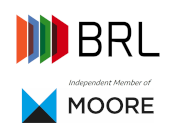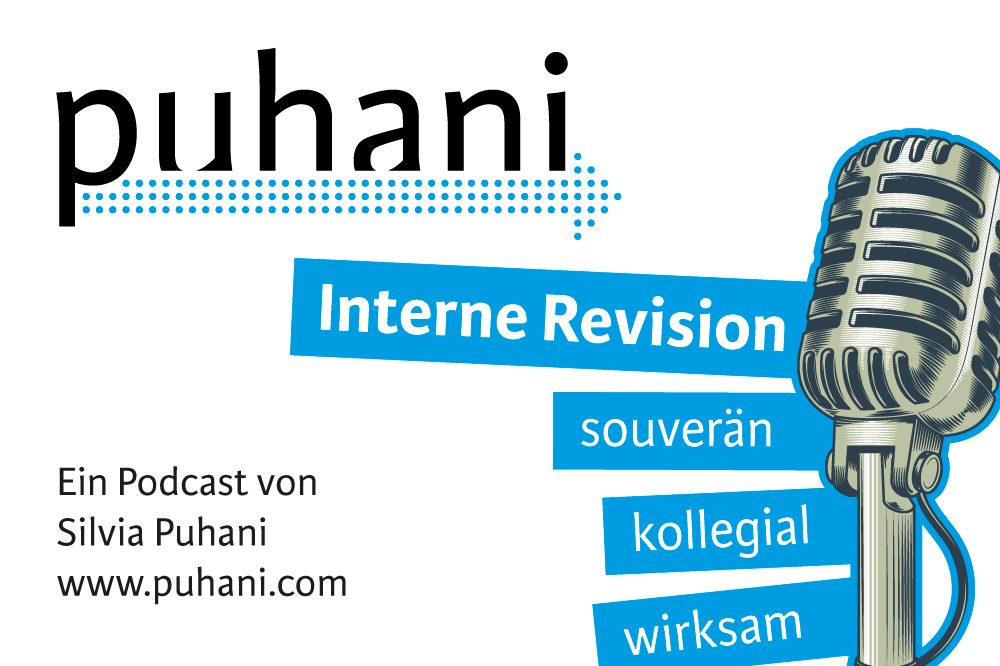Ihr Warenkorb ist leer
Sie sind Gast
Suche verfeinern
Nutzen Sie die Filter, um Ihre Suchanfrage weiter zu verfeinern.
… nach Suchfeldern
… nach Dokumenten-Typ
… nach Jahr
Suchergebnisse
1288 Treffer, Seite 5 von 129, sortieren nach:
Relevanz
Datum
-
eBook-Kapitel aus dem Buch Global Management Challenges for Internal Auditors…they should do it. We all know that the Standards are extensive, cover most key areas of internal audit profession and work. Even more – the… …the management and owners? I do not think so. Does it make the compliance for smaller audit teams very hard if not impossible to obtain? Yes, it does… …assessment because the requirements are just unrealistic, the Standards really lose their meaning. I think it is a high time to raise this discussion and…Alle Treffer im Inhalt anzeigen
-
eBook
Revision der IT-Governance mit CoBiT
Leitfaden für die Prüfungspraxis
978-3-503-13013-9…Die IT ist eine Angriffsfläche für Verletzungen der Compliance und Governance im Unternehmen. Wirksame Kontrollsysteme sind wichtiger denn je, doch… -
eBook
IT-Compliance
Erfolgreiches Management regulatorischer Anforderungen
978-3-503-19972-3…Informationssicherheit (z. B. Stichwort KRITIS oder DSGVO). Wie Sie wesentliche regulatorische Anforderungen an die IT identifizieren, priorisieren und systematisch… -
…continues to be a challenging area for financial statement preparers. It involves navigating technically complex accounting standards, and small differences… …component is initially recognised at its fair value. It is then amortised over its life using the effective interest method. The conversion option may be… …treated as either equity or as a financial liability. Its treatment will depend on whether it meets what is called the “fixed for fixed” test. In order to… …be classified as equity, a conversion option must involve a fixed amount of cash being exchanged for a fixed number of equity instruments. If it does… …not meet this test, it will be classified as a financial liability. Determining whether the “Fixed for Fixed” requirement is met Assessing whether the… …instrument. This means that its value is determined at inception, and it is never subsequently revalued. Its value is calculated as the residual difference… …not “fixed for fixed,” it is treated as a financial liability. Its value at inception is determined in the same way as for an equity-classified… …conversion option. However, it is recorded as a financial liability, not as equity. Under AASB 139 Financial Instruments: Recognition and Measurement it meets… …value, it would also be transferred to equity. No gain or loss is recognised on the conversion itself. If the conversion option had previously been… …recognised within equity, it must not be revalued, but may be reallocated at this time. For example, an amount previously recognised in a separate convertible…Alle Treffer im Inhalt anzeigen
-
eBook-Kapitel aus dem Buch IT-Compliance…Reifegrades der IT und die daraus resultierende Auslagerungsfähigkeit diskutiert, Maßnahmen zurMinderung der Abhängigkeit vom Auslagerungsunternehmen sowie der… …Verarbeitung personenbezogener Daten im Bereich des Datenschut- zes. 217 12.2 Reifegrad der IT und Auslagerungsfähigkeit 373 Siehe Kapitel 10.4… …Reifegradbe- stimmung ermöglichen. Es wird darauf verwiesen, dass der wachsende Reifegrad eine Akzeptanz der jeweiligen IT nach Standards wie COBIT, ITIL, ISO… …betreffen vor allem IT-Compliance-Anforderungen: – Ist der Reifegrad der IT ausreichend und diese auslagerungsfähig? – Wie kann die Abhängigkeit vom… …einen Kontroll- verlust verhindern? Die Antworten zu diesen Themenkomplexe werden in den folgenden Abschnit- ten vorgestellt. 12.2 Reifegrad der IT und… …IT-Compliance selbst (IT GRC Maturity Level), d.h. als Entwicklungsstand des (IT-)Compliance-Systems der Unternehmung373. – Zum anderen in Bezug auf den… …Reifegrad der IT, der es dem Unternehmen überhaupt ermöglicht, die regulatorischen Anforderungen tatsächlich zu er- füllen374. Der Reifegrad der IT selbst… …verschiedeneMindeststandards aufgeführt (u. a. ISO 27001, COSO, BAIT, NIST,PCI,DSSetc.). Der Reifegrad der IT zeigt, wie diese die Effizienz und Effektivität von Geschäfts-… …angesehen. Durch die Identifizierung der kritischen IT-Prozesse und IT-Kontrollen werden Lücken im Potenzial des Wertbeitrags der IT gegenüber dem Management… …Identifikation von Lücken ist wichtig, weil diese Lücken − oder der sich hier manifestierende mangelhafte Reifegrad der IT in Bezug auf die für das Geschäft…Alle Treffer im Inhalt anzeigen
-
eBook-Kapitel aus dem Buch Accounting Fraud…scandal that is far more than just a financial history lesson. It portrays a multiyear effort to inflate reported profits at Waste Management, Inc. (WMI)… …, using fraudulent accounting practices that allowed the company to hide about USD 1.7 billion in expenses from 1992 through part of 1997. It also… …client”. It indicated that WMI actively managed re- ported results, had a history of making significant fourth quarter adjustments, and was in an industry… …later described it as a “boondoggle”. Obviously lacking auditor independence, Andersen had too cozy a relationship with WMI. Eventually, Andersen… …Ander- sen’s willingness to bend on such issues was a result of the fees it was receiving from WMI. Andersen had actually quantified the misstatements and… …had annually presented company management with what it called “Proposed Adjusting Journal Entries” (PAJEs) to correct the misstatements. But WMI… …equipment”; then, it depreciated these costs over forty years) – avoided depreciation expenses on their garbage trucks by assigning unsup- ported and… …those assumptions, keeping the revi- sions hidden from the subsidiaries. “Keeping the process secret and centralizing it made it especially easy for top…Alle Treffer im Inhalt anzeigen
-
eBook-Kapitel aus dem Buch Accounting Fraud…prosecutions in U.S. history. The SEC called it “one of the most extensive financial frauds ever to take place at a public company”. However, the thing that… …of all the cases. It should become a show-and-tell in all busi- ness schools as the antithesis of public company management and stewardship.” In… …March 27, 2002, when it disclosed that the Rigas family had borrowed USD 2.3 billion from banks through various family-owned partnerships, using… …was already too deeply in debt. Barraged with questions, the company stated that it reviewed its accounting and would not meet the deadline for filing… …series of sham transactions (backed by fictitious documents) to give the false impression that it had actually repaid debts when, in truth, it had simply… …shifted them to off-balance sheet affiliates. Furthermore, it cre- ated misleading financial statements by giving the false appearance (through the use of… …footnotes) that the listed liabilities included all outstanding bank debt. Because Adelphia massively understated its liabilities, it falsely represented in… …public filings that it was complying with financial covenants and related financial ratio require- ments, when it was not. Misrepresentations… …secretly inflated its basic cable subscription numbers to make inves- tors think it was still growing at a healthy pace and expanding its customer base. For… …plant that had been “rebuilt” or made “two-way capable”, in order to convey the false impression that it had modernized its network. For Adelphia…Alle Treffer im Inhalt anzeigen
-
eBook-Kapitel aus dem Buch Auditing Payroll…, time-consuming process subject to considerable change pressure. IT software applications developed by specialized companies are regularly used for this purpose… …and in a few countries – even if SAP is otherwise used. While the audit activities presented here do not replace an IT audit, they may be carried out… …pay- roll. 3.2 Manual or System-Based Payroll Whether IT software is used to determine pay components depends on the scope and complexity of legal and… …and tax problems. • Auditing system security is usually the responsibility of the IT Audit department or corresponding specialists. • Within the… …soft- ware, fraud • Have the changes been tested? If so, by whom – IT or business users? • Is there a mandatory testing procedure? 3 The payroll…Alle Treffer im Inhalt anzeigen
-
…III und MaRisk machen ihnen zu schaffen. Durch die strengeren Auflagen der Regulierer müssen fast ebenso viele Kreditinstitute (93 Prozent) ihre IT und… …zu mehr Bestrebungen in der Standardisierung. 93 Prozent der befragten Entscheider wollen ihre IT sowie ihre Prozesse standardisieren und dadurch… …effizienter machen. Um diese Herausforderung zu meistern, erwarten 70 Prozent der Befragten, dass kleinere Banken bei IT und Prozessen stärker mit großen…Alle Treffer im Inhalt anzeigen
-
eBook-Kapitel aus dem Buch Auditing Payroll…7 1 Introduction Handling monthly payroll accounting can be a complex and challenging task for companies, especially when it comes to legal and… …entail many risks for companies. Given that staff is one of the major cost factors in most companies, it is es- sential to ensure that the payroll… …potential risks and to ensure compliance with le- gal and regulatory requirements. IT systems are often used to process payroll, and these systems can be…Alle Treffer im Inhalt anzeigen
- Kontakt
- |
- Impressum
- |
- Datenschutz
- |
- Cookie-Einstellung
- |
- AGB
- |
- Hilfe



